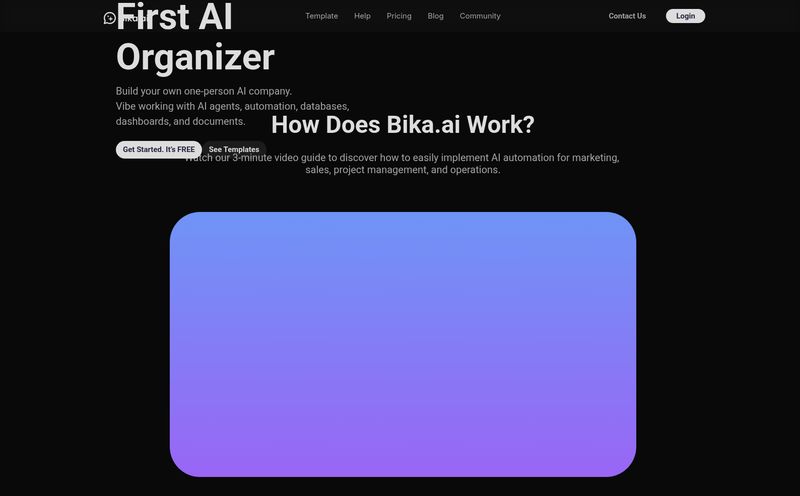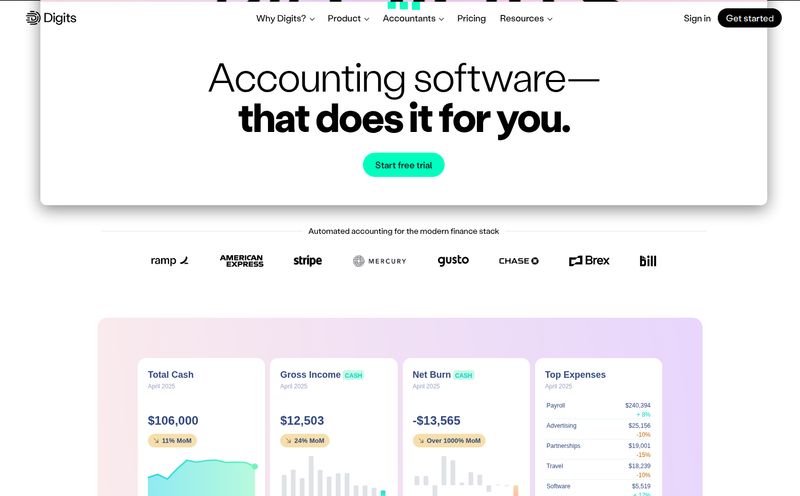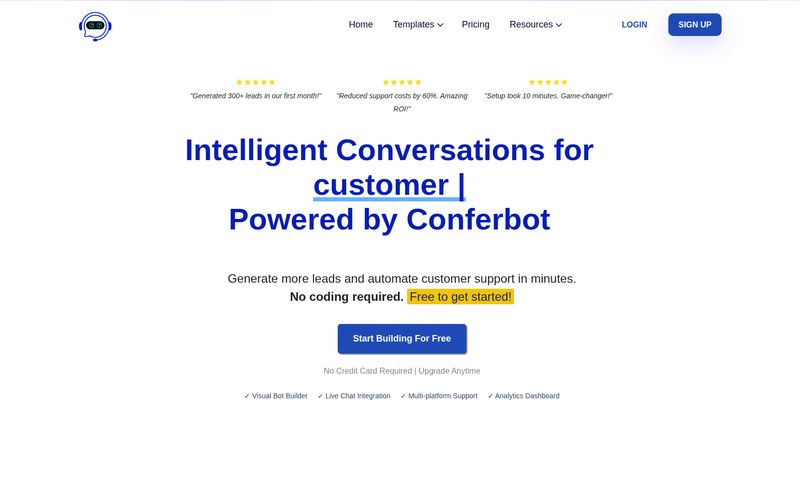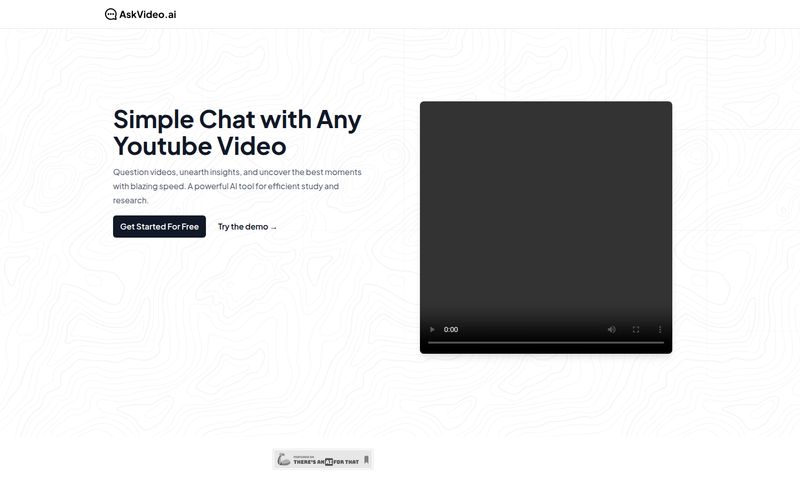You spent hours, maybe even days, tweaking prompts, uploading knowledge files, and perfecting your custom GPT. It’s brilliant. It’s useful. It might even be a little bit magical. You release it into the OpenAI GPT Store, feeling a mix of pride and anticipation. And then… crickets.
Or maybe not crickets. Maybe people are using it, but you have no idea who they are, what they’re asking, or how you can possibly turn this clever creation into a sustainable side-hustle. Sound familiar? It’s the story of countless creators since the GPT Store launched. We were given this incredible sandbox to build in, but the storefront itself feels a bit… empty. No analytics. No native payment options. Just a search bar and a prayer.
For a while, it’s felt like we’re all just throwing our creations into the void. But recently, I stumbled across a tool that’s trying to plug that exact gap. It's called GPT Builder Tools, and it promises to add the business layer that OpenAI forgot. But does it deliver? Let's get into it.
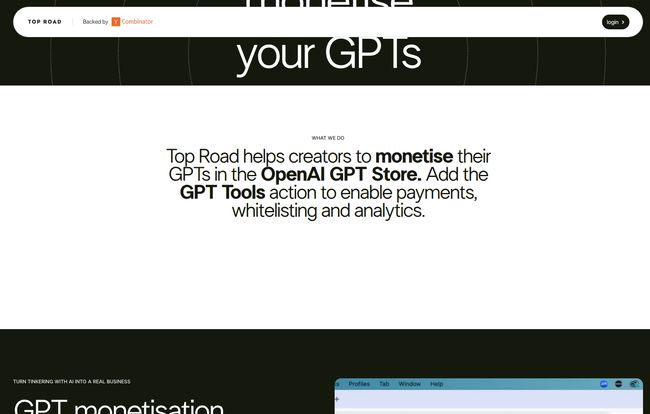
Visit GPT Builder Tools
What on Earth is GPT Builder Tools?
In short, it’s a third-party platform designed to sit on top of your existing custom GPTs. Think of it less as a new tool and more as a powerful dashboard for your creations. It’s not trying to help you build the GPT itself—OpenAI’s interface is already pretty good for that. Instead, it’s focused on everything that comes after you hit ‘publish’.
It’s the digital equivalent of opening a shop but forgetting to install a cash register or a security camera. GPT Builder Tools comes in and adds the register, the cameras, and even a little bell that rings when a customer walks in. It’s not affiliated with OpenAI, which is an important distinction we’ll talk about later, but it’s built specifically to work within that ecosystem.
The Features That Actually Matter to Creators
A features list is just a list. What I care about is what it actually lets me do. And there are a few things here that genuinely got my attention.
Finally, a Way to Get Paid for Your GPT
This is the big one, isn't it? The dream of turning your prompt engineering skills into actual revenue. GPT Builder Tools offers a few ways to do this. You can set up a paywall for your bot, offering monthly subscriptions or even a one-time fee for lifetime access. It also allows for a donation-based model, which is a softer, friendlier approach.
This changes the game entirely. Suddenly, that hyper-specific GPT you built for financial analysts or the one that generates perfect marketing copy isn’t just a cool portfolio piece; it’s a potential product. A micro-SaaS, born from a single prompt. That’s pretty exciting stuff.
“Better Data, Better GPTs” - Is It Just a Slogan?
Honestly, I was skeptical of this tagline, but the analytics side of this platform is maybe even more compelling than the monetization. The OpenAI dashboard gives you... well, nothing. You have no idea what users are really asking, where your bot gets confused, or what features people are wishing for.
GPT Builder Tools gives you access to chat summaries, user reviews, and my personal favorite: search keyword tracking. Knowing what terms people are using to find (or not find) your bot is invaluable. It helps you refine your GPT’s description, its instructions, and even the core functionality itself. It’s the feedback loop we’ve all been missing. You can stop guessing what users want and start seeing it in black and white.
Managing Your Users and Leads
Two other neat features are whitelisting and lead collection. Whitelisting is simple but powerful; it lets you grant free access to specific users. Perfect for giving access to clients, friends for beta testing, or your long-suffering partner who has listened to you talk about this bot for weeks.
The lead generation feature is just smart. You can make email collection a part of the process, turning your free or paid GPT into a lead magnet for your broader business. For consultants, coaches, or agencies, this is a fantastic way to build a mailing list of highly-qualified potential customers.
The Good, The Bad, and The Price Tag
Okay, so it sounds great in theory. But let's break it down. No tool is perfect, and it’s important to be clear-eyed about this stuff.
What I really like is the ease of setup. It’s a no-code solution, which means you don’t have to be a hardcore developer to get it working. If you can build a custom GPT, you can integrate this. The fact that it has a free plan is a huge plus, allowing you to kick the tires on a single GPT without commitment.
Now, for the reality check. It is a third-party tool. This means you’re placing a layer of trust in a company that isn’t OpenAI. While they handle billing and support, it also means your monetization is dependent on their platform staying robust and reliable. And of course, the most advanced features are locked behind a paid plan. That’s just business.
The Pricing Plans
Here’s how the plans stack up. I appreciate the simplicity, to be honest.
| Plan | Price | Key Features |
|---|---|---|
| Free | $0 | Manage 1 GPT, get access to all the core analytics and monetization features. |
| Pro | $10 / month | Manage up to 100 GPTs, adds automated notifications and dedicated customer support. |
| Business | Let's Talk (Custom) | Unlimited GPTs, lead generation tools, advanced free access options, and faster support. |
The free plan is genuinely useful. It's not one of those crippled free tiers; it gives you the essentials to see if the platform (and your GPT) has legs. The Pro plan at $10 a month feels very reasonable if you have a few GPTs and are starting to see some traction. It's the price of two fancy coffees.
Who Is This Tool Actually For?
So, should you sign up? Well, it depends on who you are.
- For the Indie Hacker or Solopreneur: Absolutely. This is your toolkit for turning a GPT into a micro-business. The barrier to entry is ridiculously low.
- For the Marketer or Agency: The lead generation and client whitelisting features make this a no-brainer. You can build custom tools for clients and manage them all from one dashboard.
- For the Casual Hobbyist: Mmm, maybe not. If you just built a fun bot to share with friends, you probably don’t need a monetization layer. The free plan might be fun for peeking at analytics, though!
It fills a very specific need for a very specific, but growing, group of people: the serious GPT creator.
My Honest Take - Is GPT Builder Tools Worth It?
I’ve been in the SEO and traffic game for a long time, and I see the same patterns repeat. A new platform emerges (like the GPT Store), a gold rush begins, and then a whole ecosystem of “pickaxe and shovel” companies springs up to support the prospectors. GPT Builder Tools is a classic pickaxe play.
Some might argue, “Why pay for this? OpenAI will probably release these features eventually.” And they might be right. But when? In 6 months? A year? And will their solution be as focused and agile as a dedicated third party's? In my experience, waiting for the main platform to catch up is a losing game if you want to move fast.
For me, the verdict is pretty clear. If you're serious about your custom GPT and see it as more than just a toy, this tool is, at a minimum, worth exploring on the free plan. The insights from the analytics alone could be enough to justify it. The small monthly cost of the Pro plan is a tiny investment if you have a real shot at generating revenue. It turns a hopeful gamble into a calculated business experiment.
Frequently Asked Questions
- Is GPT Builder Tools an official OpenAI product?
- No, it's a third-party application developed to work with the OpenAI GPT Store. It's important to remember this distinction. They are not affiliated with OpenAI.
- Can I really use it for free?
- Yes, the free plan allows you to manage one GPT and access the core monetization and analytics features. It's a great way to test the waters without any financial commitment.
- What kind of analytics will I get?
- You get insights into user behavior, including chat summaries, user reviews, and what keywords users are searching for within the GPT Store to find bots like yours.
- Do I need to be a coder to use this?
- Nope. The platform is designed to be a no-code solution. The setup process is straightforward and doesn’t require any programming knowledge.
- How does monetization actually work?
- It integrates with payment processors like Stripe to handle transactions. You set up your pricing (subscription, one-time, etc.) in GPT Builder Tools, and it generates a payment link or paywall that you connect to your GPT's instructions.
- Does this replace the GPT Store?
- Not at all. It works with the GPT Store. Your GPT still lives and is discovered on OpenAI's platform; GPT Builder Tools just adds a management and monetization layer on top of it.
Wrapping It All Up
The creator economy is expanding into AI, and the wild west days of the GPT Store won't last forever. Tools like GPT Builder Tools are the first signs of a maturing market. They provide the essential infrastructure that allows creators to move from hobbyist to professional.
While it’s not an official solution, it’s a practical and much-needed one for right now. If you've been wondering how to take your custom GPT to the next level, this might just be the tool you've been waiting for. It’s time to stop guessing and start building a real business around your creations.
Reference and Sources
- GPT Builder Tools Website: https://gpt.builders/
- Pricing and Plan Information: https://gpt.builders/app/
